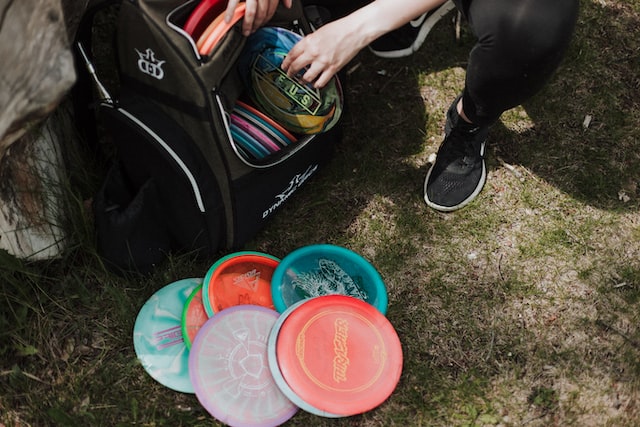Learn to play forehand disc golf
Hey Readers, in this article, I’ll help you Learn to play forehand disc golf. You can read this article to know all detail information.
There are many interesting and amazing tips and suggetions about health that you may not know. for example health screening Whether you’re interested in health, food sources, or natural history, you’ll find the information you need on About Health.
The Forehand is that the most typical throw utilized in disc golf. It’s also one among the toughest to master, but once you twig down, you’ll be able to throw discs further and with more accuracy than before.
Factors to contemplate while choosing best disc golf discs for forehand
The forehand golf discs to play from discs for backhands.
Forehand is one among the foremost important shots in disc golf. It’s crucial to handle this shot well, since it can prevent a stroke or perhaps win holes if done properly.
One must choose the correct disc betting on many factors like disc weight, size, type etc. Here are a number of my opinions on best grip and flight patterns while choosing forehand discs.
Weight of the Disc
Maximum weight i like to recommend any player is 170 gms. If you go above that, then it’s not good idea because it’ll be tough to regulate its flight path leading to loss of distance and accuracy.
Also weights below 165 gms don’t seem to be very stable on the wing path leading to loss of distance and accuracy. A disc with weight 165-170 gms is nice for many players.
Sharp
You need to settle on a disc that has more rim than concave (it are often flat or convex). Reason being more rim means you may have the choice of lifting the nose of your disc while throwing. this feature allows you to throw forehand shots like tomahawk, thumber, skip shot etc.
Also concave discs don’t seem to be easy to throw because they have a tendency to flip while doing any return.
Disc type
Distance driver: These are generally straight flying discs, but their most vital feature is that they’re going to fade down the road with distance.
Mid-range disc: These are basically 2-4mms thick discs with rim size of 4″ – 5″.
They have good glide and might handle moderate headwind quite well. Their flight path isn’t very predictable once they reach 100′.
Putter:
All putters, whether or not it’s wide rimmed or narrow rimmed discs should be thrown only on forehand. they need good glide and handle headwind easily. Reason being you’ll grip these discs comfortably any way you wish with no worries of disc starting up during grip change.
Firmness of the Disc
For Forehand, softer plastic is healthier because harder plastics will fly flatter while throwing which might be very dangerous for your game if not handled properly.
Also the control over the disc would become very tough thanks to greater speed it builds up while spinning in air.
Types of Golf Discs & Learn to play forehand disc golf
There are four kinds of discs available on the market:
Putters (Also referred to as “Putter” or “Putter”) – their flight characteristics emulate those of a putter. aside from very large and extremely small putters, they need a rim that’s almost as wide as that of mid-range discs.
They can be used with various grips on the disc along its entire circumference.
The advantage of such grip is that you simply don’t must worry about how your middle and ring fingers will touch the broadest a part of the side (see figure below).
Even if you simply use one form of grip throughout a complete round, it’s important to grasp where to position you.
Although there aren’t any universal rules for this, it’s often said that the thumb should comprise the broadest a part of the rim.
Mid-range discs
(Also called “Mid-range”) – their flight characteristics are like those of a mid-range disc, which implies they need less glide than putters and fly further.
They even have a wider rim than putters. the scale of mid-ranges is divided into three categories: <150mm, 150-159mm, 160-164mm).
Generally speaking, if you are taking charge of every kind of fields for 600 feet or more with a median move the tee box then you ought to not choose anything smaller than 160 mm.
On the opposite hand, if your average drive distance is a smaller amount than 300 feet, you’ll be able to easily use a smaller mid-range disc.
Distance drivers
(Also called ” Distance” or “Drivers”) – their flight characteristics are just like those of a distance driver.
They have the widest and thinnest rims among all four sorts of discs.
It is particularly important to notice that they fly at very high speeds and as compared with non-distance drivers, they require different throwing techniques and positions after they reach the purpose where we wish them to begin flying.
Since it’s challenging for each player to find out such technique, if your drive distance is about 300 ft. (100m), you must choose a technique like switching from an old disc with which you play well rather than choosing a distance driver.
Specialty discs
(Also referred to as “Specialties” or “Distance Drivers”) – they supply significant advantages over other three styles of golf discs. Although you can not throw it as long as a driver, it does have advantages like ease to hold from one field to a different, low-impact on the body, high durability and light-weight weight that make it popular among players with back pain / shoulder pain after playing for an extended time.
In addition, there are discs marketed under the name of “glide” because they create different flight patterns.
Conclusion
There are many interesting and amazing details about animals that you may not have known. For example, animals that start with q Whether you’re interested in animals as pets, food sources, or natural history, you’ll find the information you need on About Animals.
Choosing the proper golf disc and Learn to play forehand disc golf will be a frightening task. But, because of our disc golf discs for forehand throws and helpful information on factors to contemplate while choosing them, you ought to have a better time picking out only 1 or two that are perfect for your game.




